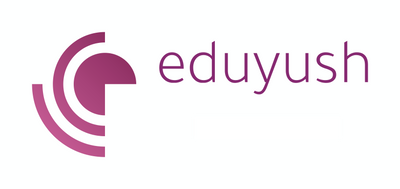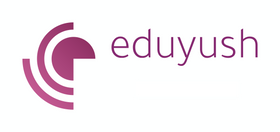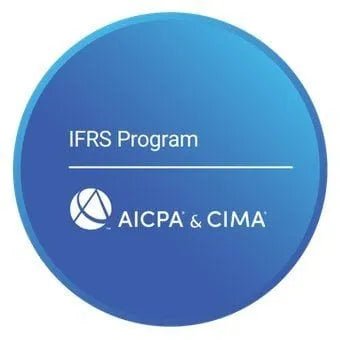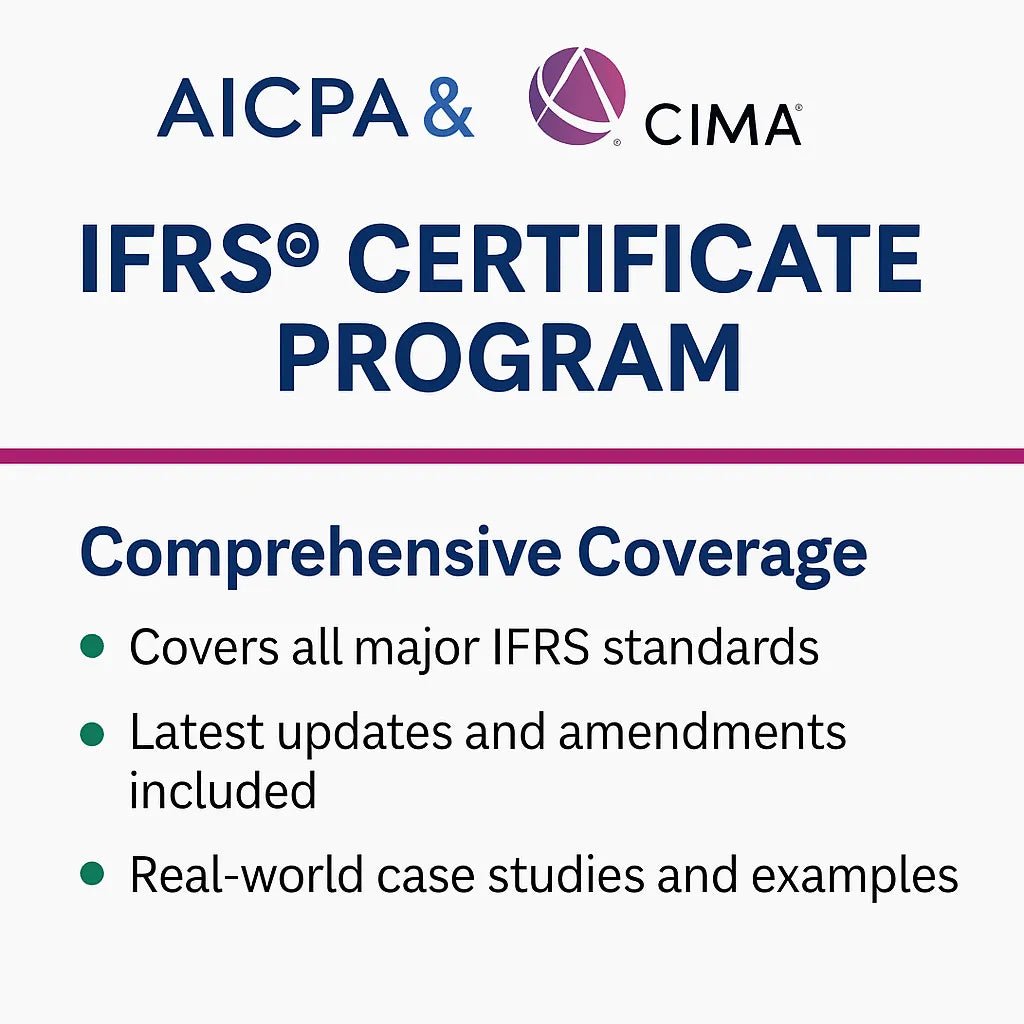50 IAS 16 Practice Questions with Answers
🎯 Master IAS 16: 50 Practice Questions Every Student Should Know
🌟 IAS 16 Practice questions: Ready to Test Your Property, Plant & Equipment Knowledge?
Whether you're preparing for exams, job interviews, or just want to solidify your understanding of IAS 16, practice makes perfect! These 50 carefully crafted questions cover everything from initial recognition to complex revaluation scenarios.
💡 How to Use This Guide:
- ✅ Try answering each question first
- ✅ Then check the solution and explanation
- ✅ Focus extra time on areas where you struggled
- ✅ Use these as flashcards for quick review
📚 BASIC CONCEPTS (Questions 1-15)
Question 1 📊
What is the scope of IAS 16?
A) All tangible assets
B) Property, plant and equipment held for use in production/supply or administrative purposes
C) Investment property only
D) Intangible assets
✅ Answer: B
Explanation: IAS 16 covers tangible items held for use in production/supply of goods/services, rental to others, or administrative purposes, expected to be used for more than one period.
Master IFRS 15: 50 Practice Questions on Revenue Recognition Explained
Question 2 🎯
Which is NOT a recognition criterion for PPE under IAS 16?
A) Probable future economic benefits will flow to entity
B) Cost can be measured reliably
C) Asset must be owned (not leased)
D) Item is tangible
✅ Answer: C
Explanation: Ownership is not required - entities can recognize PPE under finance leases. The key criteria are probable future benefits and reliable cost measurement.
Master IFRS 17: 50 Practice Questions on Insurance Contracts & CSM
Question 3 🏪
Initial cost of PPE includes:
A) Purchase price only
B) Purchase price + directly attributable costs + estimated dismantling costs
C) Market value at acquisition date
D) Replacement cost
✅ Answer: B
Explanation: Initial cost includes purchase price (less discounts), directly attributable costs to bring asset to working condition, and initial estimate of dismantling/restoration costs.
Master IFRS 18: 50 Practice Questions on MPMs, Disclosures & Statement Format
Question 4 ⚖️
Trade discounts and rebates are:
A) Added to the cost of PPE
B) Deducted from the cost of PPE
C) Recognized as separate income
D) Ignored in cost calculation
✅ Answer: B
Explanation: Trade discounts and rebates reduce the purchase price and are deducted when determining the cost of PPE.
Question 5 🏢
Directly attributable costs include:
A) General administrative costs
B) Site preparation, installation, professional fees, testing costs
C) Marketing costs for the asset
D) Training costs for staff
✅ Answer: B
Explanation: Directly attributable costs include site preparation, delivery/handling, installation, professional fees, and costs of testing asset functionality.
Master IFRS 9: 50 Practice Questions on ECL, Classification & Hedging
Question 6 🏦
After initial recognition, entities can choose:
A) Cost model only
B) Revaluation model only
C) Either cost model or revaluation model
D) Fair value model
✅ Answer: C
Explanation: IAS 16 allows choice between cost model (cost less accumulated depreciation/impairment) and revaluation model (fair value less subsequent depreciation/impairment).
Question 7 🏗️
Under the revaluation model, revaluations must be:
A) Annual
B) Regular enough to ensure carrying amount doesn't differ materially from fair value
C) Every three years
D) Only when market values increase significantly
✅ Answer: B
Explanation: Revaluations must be regular enough to ensure carrying amount doesn't differ materially from fair value at reporting date - frequency depends on volatility.
Question 8 💰
Revaluation gains are recognized in:
A) Profit or loss
B) Other comprehensive income (revaluation surplus)
C) Retained earnings directly
D) As deferred income
✅ Answer: B
Explanation: Revaluation gains are recognized in other comprehensive income and accumulated in equity as revaluation surplus, unless reversing previous revaluation loss.
Question 9 🔄
Depreciation is:
A) Decline in market value
B) Systematic allocation of depreciable amount over useful life
C) Impairment loss
D) Cash flow reduction
✅ Answer: B
Explanation: Depreciation is systematic allocation of asset's depreciable amount over its useful life, reflecting consumption of economic benefits.
Question 10 📈
Depreciable amount equals:
A) Cost of asset
B) Fair value of asset
C) Cost (or revalued amount) less residual value
D) Replacement cost
✅ Answer: C
Explanation: Depreciable amount = cost of asset (or revalued amount) minus its residual value.
Question 11 🎨
Depreciation methods include:
A) Straight-line only
B) Straight-line, diminishing balance, units of production
C) FIFO and LIFO
D) Market value method
✅ Answer: B
Explanation: IAS 16 allows various methods including straight-line, diminishing balance, and units of production -method should reflect consumption pattern.
Question 12 ⚠️
Component accounting requires:
A) Depreciating significant parts with different useful lives separately
B) Treating all parts as one asset
C) Using same depreciation rate for all components
D) Only applying to buildings
✅ Answer: A
Explanation: Each part of PPE with cost significant relative to total cost and different useful life must be depreciated separately (component accounting).
Question 13 🏪
An item of PPE is derecognized when:
A) It becomes fully depreciated
B) Disposed of or when no future economic benefits expected
C) It requires major repairs
D) Market value declines
✅ Answer: B
Explanation: Derecognize PPE on disposal or when no future economic benefits are expected from its use or disposal.
Question 14 📊
Spare parts are treated as PPE when:
A) They are expensive
B) Expected to be used for more than one period and meet PPE definition
C) They are for critical equipment
D) Always treated as inventory
✅ Answer: B
Explanation: Major spare parts and stand-by equipment qualify as PPE if expected to be used for more than one period and meet PPE recognition criteria.
Question 15 🔍
Subsequent expenditure on PPE is capitalized when:
A) Amount exceeds specific threshold
B) Probable future economic benefits exceed those originally expected
C) Management approves the expenditure
D) It's maintenance expenditure
✅ Answer: B
Explanation: Capitalize subsequent expenditure only when it enhances performance beyond originally assessed standard (increases future economic benefits).
🏭 PRACTICAL APPLICATIONS (Questions 16-35)
Question 16 📱
Machine cost $100,000, delivery $5,000, installation $10,000, testing $3,000, staff training $2,000. Initial cost is:
A) $100,000
B) $115,000
C) $118,000
D) $120,000
✅ Answer: C
Explanation: $100,000 + $5,000 + $10,000 + $3,000 = $118,000. Staff training is not directly attributable to bringing asset to working condition.
Question 17 🏠
Equipment costs $50,000, estimated dismantling cost $5,000 (PV $3,000), residual value $8,000, useful life 10 years. Annual straight-line depreciation:
A) $4,200
B) $4,500
C) $5,000
D) $5,300
✅ Answer: B
Explanation: Cost = $50,000 + $3,000 = $53,000. Depreciable amount = $53,000 - $8,000 = $45,000. Annual depreciation = $45,000 ÷ 10 = $4,500.
Question 18 💳
An asset costs $120,000 with 2% discount for payment within 30 days. The entity pays within 30 days. Initial cost is:
A) $120,000
B) $122,400
C) $117,600
D) $118,000
✅ Answer: C
Explanation: $120,000 × (1 - 2%) = $120,000 × 98% = $117,600. Trade discounts reduce the cost of PPE.
Question 19 🏢
A building is revalued from carrying amount $800,000 to fair value $1,200,000. The revaluation gain is:
A) $400,000 in profit or loss
B) $400,000 in OCI (revaluation surplus)
C) Split between P&L and OCI
D) Not recognized until disposal
✅ Answer: B
Explanation: Revaluation gains are recognized in other comprehensive income and accumulated in revaluation surplus unless reversing previous losses.
Question 20 💼
Equipment with carrying amount $60,000 is revalued to $45,000. There's no previous revaluation surplus. The loss is:
A) $15,000 in OCI
B) $15,000 in profit or loss
C) Not recognized
D) Deferred until disposal
✅ Answer: B
Explanation: Revaluation decreases are recognized in profit or loss unless there's a credit balance in revaluation surplus for that asset.
Question 21 🌾
A factory machine produces 100,000 units over its life, costing $50,000 with $5,000 residual value. In Year 1, it produces 20,000 units. Depreciation is:
A) $4,500
B) $9,000
C) $10,000
D) $15,000
✅ Answer: B
Explanation: Units of production: ($50,000 - $5,000) × (20,000 ÷ 100,000) = $45,000 × 20% = $9,000.
Question 22 🏗️
A company spends $20,000 on routine maintenance and $30,000 upgrading equipment to improve efficiency by 25%. Amount capitalized:
A) $0
B) $20,000
C) $30,000
D) $50,000
✅ Answer: C
Explanation: Routine maintenance is expensed. Only the $30,000 upgrade that enhances performance beyond originally assessed standard is capitalized.
Question 23 💰
Under diminishing balance at 20%, an asset costing $100,000 with 5-year life and $10,000 residual value. Year 1 depreciation:
A) $18,000
B) $20,000
C) $22,000
D) $16,000
✅ Answer: B
Explanation: Diminishing balance: $100,000 × 20% = $20,000. Note: residual value not deducted in diminishing balance calculations, but asset cannot be depreciated below residual value.
Question 24 🔄
A company changes from straight-line to units of production depreciation due to changed usage pattern. This is:
A) Change in accounting policy
B) Change in accounting estimate
C) Prior period error
D) Not permitted
✅ Answer: B
Explanation: Changes in depreciation method due to changed pattern of consumption are changes in accounting estimate, applied prospectively.
Question 25 🏦
An asset's carrying amount is $80,000, fair value $100,000, value in use $75,000, disposal costs $5,000. Under costmodel, impairment loss is:
A) $0
B) $5,000
C) $15,000
D) $20,000
✅ Answer: B
Explanation: Recoverable amount = higher of fair value less disposal costs ($95,000) and value in use ($75,000) = $95,000. Impairment = $80,000 - $75,000 = $5,000. Wait, that's wrong. Recoverable amount is $95,000, so no impairment loss since $95,000 > $80,000.
Let me recalculate: Recoverable amount = max($100,000 - $5,000, $75,000) = max($95,000, $75,000) = $95,000. Since $95,000 > $80,000, no impairment loss.
✅ Answer: A
Explanation: Recoverable amount = higher of fair value less disposal costs ($95,000) and value in use ($75,000) = $95,000. Since $95,000 > $80,000 carrying amount, no impairment loss.
Question 26 📊
A building costs $500,000, land costs $100,000. Building has 50-year life, land is not depreciated. Annual depreciation:
A) $10,000
B) $12,000
C) $0
D) Depends on allocation
✅ Answer: A
Explanation: Only building is depreciated: $500,000 ÷ 50 years = $10,000. Land has unlimited useful life and is not depreciated.
Question 27 🎯
Government grant of $40,000 reduces cost of $200,000 equipment. Under IAS 20, equipment is initially recorded at:
A) $200,000
B) $160,000
C) $240,000
D) Fair value
✅ Answer: B
Explanation: Government grants can be deducted from asset's carrying amount, so equipment recorded at $200,000 - $40,000 = $160,000.
Question 28 🏪
Exchange of similar assets: Old asset carrying amount $50,000, fair value $60,000. New asset fair value $65,000, cash paid $5,000. Gain recognized:
A) $0 (no commercial substance)
B) $10,000
C) $5,000
D) $15,000
✅ Answer: B
Explanation: If exchange has commercial substance, recognize fair value. Gain = $60,000 - $50,000 = $10,000. New asset recorded at $65,000.
Question 29 💡
Self-constructed asset costs: Materials $100,000, labor $80,000, overhead $40,000, borrowing costs $10,000, abnormalwaste $5,000. Capitalized cost:
A) $220,000
B) $230,000
C) $235,000
D) $180,000
✅ Answer: B
Explanation: $100,000 + $80,000 + $40,000 + $10,000 = $230,000. Abnormal waste ($5,000) is excluded from cost.
Question 30 🏭
Asset under construction, qualifying for borrowing costs capitalization. Construction period 18 months, borrowing costs $60,000. Amount capitalized:
A) $0
B) $60,000
C) $30,000
D) Depends on construction progress
✅ Answer: B
Explanation: Borrowing costs directly attributable to acquisition/construction of qualifying asset are capitalized during construction period until ready for intended use.
Question 31 📈
Revaluation model: Asset revalued from $100,000 to $150,000. Previous revaluation surplus $20,000. Current gain recognition:
A) $50,000 in OCI
B) $30,000 in OCI, $20,000 in P&L
C) $50,000 in P&L
D) $70,000 in OCI
✅ Answer: A
Explanation: All revaluation gains go to OCI (revaluation surplus) unless reversing previous losses through P&L. The $50,000 gain increases revaluation surplus.
Question 32 🏢
Major inspection costs $30,000 every 3 years for equipment costing $300,000. How should inspection costs be treated?
A) Expense when incurred
B) Capitalize and depreciate over 3 years
C) Add to equipment cost permanently
D) Create provision annually
✅ Answer: B
Explanation: Major inspection costs are capitalized as separate component and depreciated over period until nextinspection (component accounting).
Question 33 🎨
Asset disposal: Carrying amount $80,000, disposal proceeds $75,000, disposal costs $3,000. Gain/(loss) on disposal:
A) $(5,000) loss
B) $(8,000) loss
C) $2,000 loss
D) $(3,000) loss
✅ Answer: B
Explanation: Gain/(Loss) = Net disposal proceeds - Carrying amount = ($75,000 - $3,000) - $80,000 = $72,000 - $80,000 = $(8,000) loss.
Question 34 ⚖️
Borrowing costs are capitalized when:
A) Asset is purchased with loan
B) Expenditures are incurred, borrowing costs incurred, activities to prepare asset are in progress
C) Construction exceeds one year
D) Interest rates exceed 5%
✅ Answer: B
Explanation: Capitalize borrowing costs when: (1) expenditures for asset incurred, (2) borrowing costs incurred, (3) activities to prepare asset for use/sale in progress.
Question 35 🔄
Asset carried at revalued amount $200,000 (cost $150,000, revaluation surplus $50,000) is sold for $180,000.Treatment of revaluation surplus:
A) Recognize $20,000 loss in P&L, keep surplus
B) Transfer $50,000 surplus to retained earnings
C) Recognize $70,000 loss in P&L
D) Reverse $20,000 from surplus to P&L
✅ Answer: B
Explanation: On disposal, transfer entire revaluation surplus to retained earnings. Also recognize $20,000 loss in P&L ($180,000 - $200,000).
🎓 ADVANCED CONCEPTS (Questions 36-50)
Question 36 📊
Under IFRS 13 fair value measurement for revaluation, highest hierarchy level is:
A) Market approach using comparable assets
B) Cost approach using replacement cost
C) Income approach using cash flows
D) Quoted prices in active markets
✅ Answer: D
Explanation: Level 1 inputs (quoted prices in active markets for identical assets) provide most reliable evidence for fair value measurement.
Question 37 🔍
Componentization is required when:
A) Asset is expensive
B) Component has significantly different useful life or depreciation pattern
C) Management wants detailed tracking
D) Asset is complex
✅ Answer: B
Explanation: Separate components when: (1) cost is significant relative to total cost AND (2) useful life or consumption pattern differs significantly from other parts.
Question 38 🏦
Decommissioning costs are:
A) Expensed when incurred
B) Capitalized initially, with provision for estimated costs
C) Only recognized when dismantling begins
D) Always immaterial
✅ Answer: B
Explanation: Initial estimate of dismantling/restoration costs is included in asset cost, with corresponding provision. Changes in estimates adjust both asset and provision.
Question 39 📈
Professional fees for asset acquisition are:
A) Always capitalized
B) Capitalized if directly attributable to bringing asset to working condition
C) Always expensed
D) Capitalized only if >5% of asset cost
✅ Answer: B
Explanation: Professional fees (legal, architectural, engineering) are capitalized if directly attributable to bringing asset to location/condition for intended use.
Question 40 🎯
Residual value is:
A) Scrap value at end of useful life
B) Estimated amount entity would receive from disposal, less disposal costs, if asset were already at end of useful life
C) Market value today
D) Insurance value
✅ Answer: B
Explanation: Residual value is estimated amount entity would currently obtain from disposal of asset, less disposal costs, if asset were already at end of useful life and condition.
Question 41 🏭
Depreciation begins when:
A) Asset is purchased
B) Asset is available for use (in location/condition for intended use)
C) Asset is first used
D) Asset is fully installed
✅ Answer: B
Explanation: Depreciation begins when asset is available for use (in location and condition necessary for intended operation), even if not yet used.
Question 42 📊
Under revaluation model, accumulated depreciation is:
A) Kept separately
B) Eliminated against gross carrying amount
C) Either eliminated or restated proportionally
D) Never adjusted
✅ Answer: C
Explanation: Two approaches: (1) eliminate accumulated depreciation against gross amount, or (2) restate accumulated depreciation proportionally so net equals revalued amount.
Question 43 🔄
Useful life and residual value are reviewed:
A) Only when indicators of change
B) At least annually
C) Every three years
D) Only for revalued assets
✅ Answer: B
Explanation: Useful life, depreciation method, and residual value must be reviewed at least annually, with changes treated as changes in estimates.
Question 44 🏢
Investment property vs PPE distinction depends on:
A) Asset type only
B) Purpose of holding (capital appreciation/rental vs own use)
C) Value only
D) Legal form
✅ Answer: B
Explanation: Investment property (IAS 40) is held for rental income or capital appreciation, while PPE (IAS 16) is held for own use in operations.
Question 45 📈
Safety equipment required by law for factory operation is:
A) Not capitalized (regulatory requirement)
B) Capitalized as part of PPE if meets recognition criteria
C) Expensed as compliance cost
D) Treated as contingent liability
✅ Answer: B
Explanation: Safety equipment necessary for entity to obtain future economic benefits from other assets is capitalizedas part of PPE.
Question 46 🎯
Stripping costs in mining operations are:
A) Always expensed
B) Capitalized as part of mine development if accessing ore reserves
C) Treated as inventory
D) Deferred until production begins
✅ Answer: B
Explanation: Production stripping costs that provide access to ore reserves are capitalized as part of the mine (IFRIC 20), while those for current production are expensed.
Question 47 🏦
Restoration provision changes after initial recognition:
A) Don't affect asset cost
B) Adjust asset cost and depreciation going forward
C) Are recognized in P&L only
D) Create separate asset
✅ Answer: B
Explanation: Changes in restoration provisions adjust the asset's carrying amount and affect future depreciation (discount rate changes go to P&L).
Question 48 📊
Asset retirement obligations under IAS 16:
A) Are ignored until retirement
B) Are included in initial cost at present value
C) Are only disclosed in notes
D) Are expensed annually
✅ Answer: B
Explanation: Asset retirement obligations (dismantling, restoration costs) are included in initial asset cost at present value, with corresponding provision.
Question 49 🔄
Impairment reversal under IAS 36 for PPE:
A) Is never permitted
B) Is permitted up to carrying amount under cost model
C) Goes to revaluation surplus
D) Must be approved by auditors
✅ Answer: B
Explanation: Impairment losses can be reversed up to what carrying amount would have been (net of depreciation) if no impairment had been recognized.
Question 50 🎯
PPE held for sale under IFRS 5:
A) Continues depreciation
B) Stops depreciation, measured at lower of carrying amount and fair value less costs to sell
C) Is revalued to fair value
D) Is transferred to inventory
✅ Answer: B
Explanation: When classified as held for sale, asset stops being depreciated and is measured at lower of carrying amount and fair value less costs to sell.
🎯 How Did You Score?
45-50 Correct: 🏆 IAS 16 Expert! You've mastered property, plant & equipment
35-44 Correct: 📚 Strong Foundation - Review the concepts you missed
25-34 Correct: 📖 Good Start - Focus on practical applications
Below 25: 🎓 Keep Learning - Review basic concepts and try again
🚀 Next Steps for Students
- ✅ Review missed questions and understand the explanations
- ✅ Practice with real company examples from annual reports
- ✅ Join study groups to discuss complex scenarios
- ✅ Follow updates to IAS 16 from the IASB
- ✅ Apply knowledge in internships or case studies
🎓 Ready to Master IFRS Completely?
These practice questions are just the beginning! Eduyush offers comprehensive IFRS training that will take yourknowledge to the next level:
📚 AICPA IFRS Certification Course 🪙 Cutting-edge topics including crypto accounting 🎯 Real-world case studies and applications 🏆 Preparation for emerging accounting challenges
📚 Diploma in IFRS 🌍 International perspective on evolving standards 💻 Technology-integrated accounting education 👨🏫 Expert instructors who understand innovation
🚀 Transform your understanding of IFRS from basic to expert level with Eduyush!
FAQs
ACCA blogs
Follow these links to help you prepare for the ACCA exams
IFRS blogs
Follow these blogs to stay updated on IFRS
Formats
Use these formats for day to day operations
- Account closure format
- Insurance claim letter format
- Transfer certification application format
- Resignation acceptance letter format
- School leaving certificate format
- Letter of experience insurance
- Insurance cancellation letter format
- format for Thank you email after an interview
- application for teaching job
- ACCA PER examples
- Leave application for office
- Marketing manager cover letter
- Nursing job cover letter
- Leave letter to class teacher
- leave letter in hindi for fever
- Leave letter for stomach pain
- Leave application in hindi
- Relieving letter format
Interview questions
Link for blogs for various interview questions with answers
- Strategic interview questions
- Accounts payable interview questions
- IFRS interview questions
- CA Articleship interview questions
- AML and KYC interview questions
- Accounts receivable interview questions
- GST interview questions
- ESG Interview questions
- IFRS 17 interview questions
- Concentric Advisors interview questions
- Questions to ask at the end of an interview
- Business Analyst interview questions
- Interview outfits for women
- Why should we hire you question
leave application format
- Leave application for office
- Leave application for school
- Leave application for sick leave
- Leave application for marriage
- leave application for personal reasons
- Maternity leave application
- Leave application for sister marriage
- Casual leave application
- Leave application for 2 days
- Leave application for urgent work
- Application for sick leave to school
- One day leave application
- Half day leave application
- Leave application for fever
- Privilege leave
- Leave letter to school due to stomach pain
- How to write leave letter
Insurance blogs
- Sample letter of appeal for reconsideration of insurance claims
- How to increase insurance agent productivity
- UAE unemployment insurance
- Insurance cancellation letter
- Insurance claim letter format
- Insured closing letter formats
- ACORD cancellation form
- Provision for insurance claim
- Cricket insurance claim
- Insurance to protect lawsuits for business owners
- Certificate holder insurance
- does homeowners insurance cover mold
- sample letter asking for homeowner right to repair for insurance
- Does homeowners insurance cover roof leaks














Leave a comment